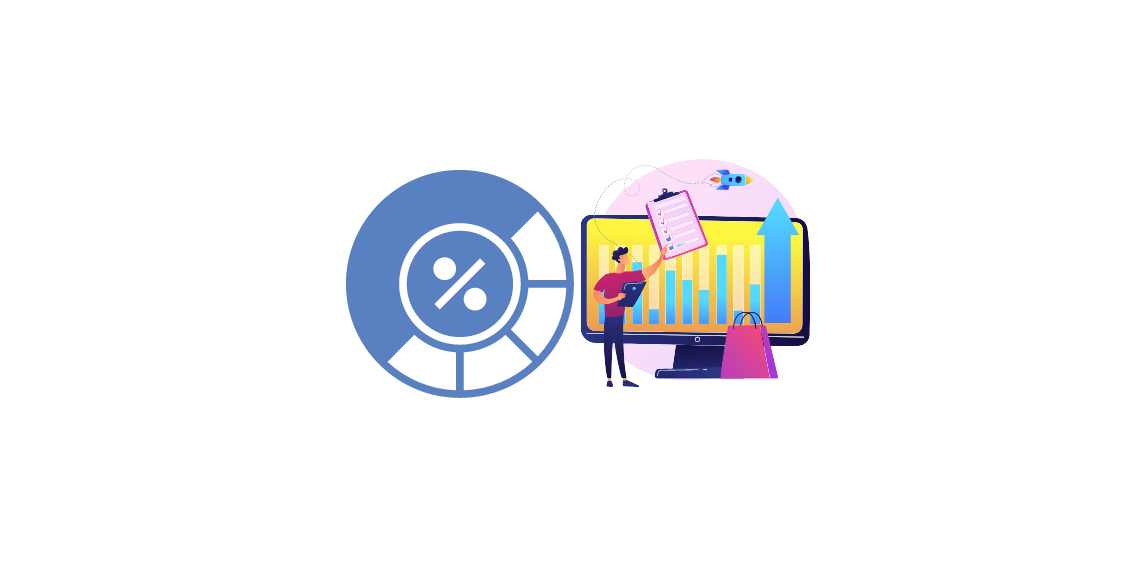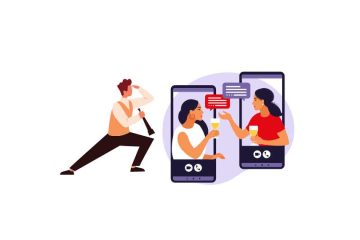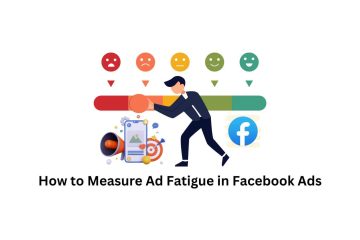Are you struggling to achieve the desired results from your Facebook ads? It’s time to crack the code and discover the secret to maximizing their potential. Introducing the Lin-Rodnitzky Ratio, a groundbreaking concept that will revolutionize your advertising strategy on Facebook. By combining data analysis and creative thinking, this ratio optimizes your ads for maximum impact. In this article, we’ll explore the inner workings of the Lin-Rodnitzky Ratio Ratio and provide practical tips on implementing it effectively. Get ready to take your Facebook ads to new heights with the Lin-Rodnitzky Ratio: the key to success.
Understanding the Lin-Rodnitzky Ratio Ratio for Facebook Ads
To harness the full potential of the Lin-Rodnitzky Ratio, it’s essential to understand its workings. This ratio measures the effectiveness of your Facebook ads by evaluating the balance between creativity and data-driven decision-making. It consists of two key components: the creative quality score and the data quality score. Balancing these factors enables you to optimize your ads for maximum impact.
The creative quality score assesses the overall quality and relevance of your ad creative, including copy, visuals, and design. A high creative quality score indicates an appealing and engaging ad that resonates with your target audience. Conversely, a low creative quality score suggests a lack of creativity, hindering effective audience capture.
The data quality score evaluates the effectiveness of your targeting and optimization efforts, considering factors such as audience targeting, ad placement, and bidding strategies. A high data quality score means your ads reach the right audience at the right time, resulting in increased engagement and conversions. Conversely, a low data quality score indicates room for improvement in targeting or optimization strategies.
Calculating the Lin-Rodnitzky Ratio involves dividing the creative quality score by the data quality score. This ratio reflects how well your ads strike the balance between creativity and data-driven decision-making. A higher Lin-Rodnitzky Ratio suggests better ad performance.
The Importance of the Lin-Rodnitzky Ratio in Facebook Advertising
In the dynamic landscape of digital advertising, staying ahead and maximizing the effectiveness of your Facebook ads is crucial. The Lin-Rodnitzky Ratio bridges the gap between creativity and data-driven decision-making, making it invaluable for success. Relying solely on creative intuition or data analysis is no longer enough. Striking the right balance is key to visually appealing, highly targeted, and optimized ads.
Optimizing your ads based on the Lin-Rodnitzky Ratio ensures that creative efforts are supported by data-driven strategies, enhancing their reach and impact. This holistic approach connects with your target audience on a deeper level, increasing engagement, conversions, and return on investment.
Additionally, the Lin-Rodnitzky Ratio serves as a benchmark for measuring and comparing ad performance over time. Regularly tracking and analyzing this ratio allows you to identify trends, make data-driven optimizations, and continuously improve your Facebook advertising strategy.
How to Calculate the Lin-Rodnitzky Ratio for Facebook Ads
Now that we understand the significance of the Lin-Rodnitzky Ratio, let’s dive into the practical steps for calculating this ratio for your Facebook ads. Although the calculation may initially seem complex, it can be broken down into simple steps.
Step 1: Determine the Creative Quality Score
Begin by assessing the creative quality score for your Facebook ads. Evaluate the overall quality and relevance of your ad creative, including copy, visuals, and design.
Ask yourself the following questions:
1. Is the ad visually appealing and eye-catching?
2. Does the copy effectively communicate the key message and value proposition?
3. Does the ad resonate with the target audience and capture their attention
?
4. Is the design consistent with your brand identity and messaging?
5. Does the ad stand out from the competition and differentiate your brand?
Assign a score to each question, with higher scores indicating better creative quality. For example, use a scale of 1-10. Once you have scores for each question, calculate the average to determine the overall creative quality score.
Step 2: Determine the Data Quality Score
Next, evaluate the data quality score for your Facebook ads. Assess the effectiveness of your targeting and optimization efforts, including factors such as audience targeting, ad placement, and bidding strategies.
Ask yourself the following questions:
1. Is the ad being shown to the right target audience?
2. Are you effectively reaching your desired demographic and psychographic segments?
3. Are you utilizing advanced targeting options, such as custom audiences or lookalike audiences?
4. Are your ads being shown in the most relevant and engaging placements?
5. Are you optimizing your bidding strategy to maximize your return on investment?
Assign a score to each question, with higher scores indicating better data quality. Use a scale of 1-10 and calculate the average to determine the overall data quality score.
Step 3: Calculate the Lin-Rodnitzky Ratio
Finally, calculate the Lin-Rodnitzky Ratio by dividing the creative quality score by the data quality score. This ratio indicates the balance between creativity and data-driven decision-making, providing insight into your ad performance.
For example, if your creative quality score is 8 and your data quality score is 7, the Lin-Rodnitzky Ratio would be 8/7, approximately 1.14.
Remember, a higher Lin-Rodnitzky Ratio suggests a better balance and more effective Facebook ads.
Examples of Successful Facebook Ad Campaigns Using the Lin-Rodnitzky Ratio
To illustrate the effectiveness of the Lin-Rodnitzky Ratio, let’s explore real-life examples of successful Facebook ad campaigns that have leveraged this ratio for remarkable results.
Example 1: East Clothing
East Clothing, a popular fashion brand, aimed to promote its new summer collection to a highly targeted audience. By analyzing their creative quality score and data quality score, they optimized their Facebook ads using the Lin-Rodnitzky Ratio.
They focused on visually stunning ad creatives showcasing their summer collection. The copy effectively communicated product features and benefits. Regarding data quality, they employed advanced targeting options, such as lookalike audiences, to reach their desired customer segments.
By implementing the Lin-Rodnitzky Ratio, East Clothing achieved a creative quality score of 9 and a data quality score of 8, resulting in a Lin-Rodnitzky Ratio of approximately 1.13. This optimization led to increased engagement, conversions, and sales.
Example 2: Alpha Fitness
Alpha Fitness, a local gym, aimed to attract new members and increase sign-ups for their fitness classes. They utilized the Lin-Rodnitzky Ratio to optimize their Facebook ads and improve ad performance.
Alpha Fitness focused on visually appealing ad creatives highlighting the benefits of their fitness classes and members’ achievements. They included strong call-to-action elements to encourage sign-ups. In terms of data quality, they implemented precise audience targeting to reach their ideal customer base.
By leveraging the Lin-Rodnitzky Ratio, Alpha Fitness achieved a creative quality score of 7 and a data quality score of 9, resulting in a Lin-Rodnitzky Ratio of approximately 0.78. This optimization led to increased sign-ups and a higher return on investment for their Facebook ad campaigns.
Tips for Optimizing Your Facebook Ads Using the Lin-Rodnitzky Ratio
To optimize your Facebook ads using the Lin-Rodnitzky Ratio, consider the following
practical tips:
1. Test Different Ad Creatives: Experiment with various visuals, copy variations, and design elements to find the perfect balance between creativity and effectiveness. Identify what resonates best with your target audience.
2. Refine Your Targeting: Continuously refine your audience targeting based on campaign insights. Utilize advanced options, like custom audiences and lookalike audiences, to reach your ideal customer base effectively.
3. Analyze and Iterate: Regularly track and analyze your Lin-Rodnitzky Ratio to identify trends and make data-driven optimizations. Assess the impact of creative elements and targeting strategies on your ratio. Iterate and refine your ads based on gathered insights to improve ad performance.
4. Leverage Automation and AI: Consider using automation and AI-powered tools to streamline ad optimization. These tools help identify trends, make data-driven decisions, and automate certain aspects of your Facebook advertising strategy, freeing up time for creativity and strategy.
5. Stay Updated: Keep up with the latest trends, best practices, and algorithm changes in the digital advertising landscape. Follow industry experts, attend webinars, and participate in relevant communities to stay ahead and ensure your Facebook ads remain effective.
By implementing these tips and leveraging the Lin-Rodnitzky Ratio, you can optimize your Facebook ads for maximum impact and achieve outstanding results.
Common Mistakes to Avoid When Using the Lin-Rodnitzky Ratio
While the Lin-Rodnitzky Ratio is a powerful concept that can supercharge your Facebook ads, it’s important to avoid common mistakes that hinder its effectiveness. By steering clear of these mistakes, you can leverage the full potential of the ratio for optimal ad performance.
1. Neglecting Creative Quality: Don’t overlook the creative quality of your ads. Striking the right balance between creativity and data is crucial. Ensure your ad creatives are visually appealing, engaging, and resonate with your target audience.
2. Overlooking Data Quality: Don’t solely rely on creative intuition and neglect data quality. Effective targeting, optimization, and bidding strategies are vital for maximizing ad impact. Continuously refine your data quality score through audience analysis and optimization efforts.
3. Failing to Iterate and Optimize: Ad optimization is an ongoing process. Regularly track and analyze your Lin-Rodnitzky Ratio to uncover insights and make data-driven optimizations. Continuously iterate and refine your ads based on data and feedback.
4. Ignoring Industry Trends and Best Practices: Stay updated with the latest industry trends and best practices. Ignoring these trends can lead to outdated and ineffective ad strategies. Stay informed and adapt your approach accordingly.
5. Not Testing and Experimenting: Testing different ad creatives, targeting options, and optimization strategies is essential for finding the optimal balance for your audience and goals. Don’t be afraid to experiment and test new ideas. Use A/B testing to compare variations and identify what works best for your ads.
By avoiding these common mistakes and focusing on the key components of the Lin-Rodnitzky Ratio, you can optimize your Facebook ads for maximum impact and achieve outstanding results.
Tools and Resources for Measuring and Improving Your Lin-Rodnitzky Ratio
Measuring and improving your Lin-Rodnitzky Ratio requires the right tools and resources. Fortunately, several tools are available to help track, analyze, and optimize your Facebook ad performance.
1. Facebook Ads Manager: This essential tool enables you to manage and optimize your Facebook ad campaigns. It provides in-depth insights into ad performance, audience demographics, and engagement metrics. Use the Ads Manager to track your Lin-Rodnitzky Ratio and make data-driven optimizations.
2. Google Analytics: This powerful tool tracks and analyzes website traffic, conversions, and user behavior. By integrating Google Analytics with your Facebook ads, you gain a deeper understanding of how
your ads drive website engagement and conversions.
3. AdEspresso: A comprehensive tool offering advanced analytics, A/B testing, and optimization features for Facebook ads. It provides valuable insights into ad performance and allows you to easily create, manage, and optimize campaigns.
4. Hootsuite: A social media management platform enabling you to schedule and manage your Facebook ad campaigns.
By utilizing these tools and resources, you can measure, analyze, and optimize your Lin-Rodnitzky Ratio for improved Facebook ad performance.
Wrapping Up
The Lin-Rodnitzky Ratio is a powerful concept that can significantly enhance your Facebook advertising strategy. By understanding and implementing this ratio, you can strike the perfect balance between creativity and data-driven decision-making, leading to more effective and impactful Facebook ads.
Remember, the key to success lies in continuously tracking, analyzing, and optimizing your Lin-Rodnitzky Ratio. Stay informed about the latest industry trends, experiment with different ad creatives and targeting options, and make data-driven decisions to maximize the impact of your ads.
The digital advertising landscape is constantly evolving, and the Lin-Rodnitzky Ratio provides a solid foundation for staying ahead of the competition. So, start implementing the Lin-Rodnitzky Ratio in your Facebook advertising strategy today and unlock the full potential of your ads!
With the right approach and the right tools, you can supercharge your Facebook ads, connect with your target audience more effectively, and ultimately, drive better business results. The Lin-Rodnitzky Ratio is your secret weapon to achieving this. So, don’t wait any longer, start using it today and experience the difference it can make to your Facebook advertising strategy.

Hello, I’m Ali Raza, the brain behind Digital Realm Trends.
Hailing from the vibrant world of digital marketing, I’ve honed my skills over years. Based on my experience, I’m here to unravel the complexities of digital marketing, analytics and paid marketing, crafted for individuals like you. Join me in uncovering the power of digital marketing tools and strategies, fueled by experimentation and insights.




